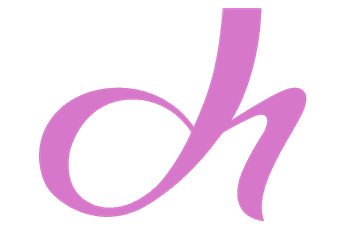The clothing Deha is synonymous with dance
Welcome to the section of the brand Deha dedicated to dance wear: here's where you can find many products of clothing Deha ideal for the dance. Deha is a well known brand in the environment of the dance. Theclothing Deha is one of the best seller for the dancers Italian: its products are designed to facilitate the movements of the dance and make it more comfortable workouts. The corsairs, t-shirts, sweatshirts, pants, leggings, shorts: Deha produces clothing with an unmistakable style and quality. If you love to dance, SportIT are immediately available many products of clothing Deha. In the revolutionary sixties, while Italian design and fashion knew a moment of expression extraordinary, there was the meeting between a young athlete Raimondo Tauro and a young designer Renato Vendramel.
From this meeting in 1967 borns the Meeting Group S.p.A., a dynamic reality in the Treviso area, soon becoming a leader in the premium market of Italian sportswear.
Thanks to an important know-how gained over the years, and to the precious contribution of figures of excellence in the textile industry, the company has always managed the whole supply chain: from the stylistic creativity to the modeling, from the production to commercial distribution.
The sportswear made in Italy, born as a challenge, becomes a reality. An increasingly current and big trend expansion that today is named DEHA.
DEHA, founded in 2005 as a celebration of the dance world and evolved into a total look, has established itself quickly thanks to its recognizable style but never screamed, characterized by quality and softness, but at the same time, exalting femininity.
DEHA is distributed in over 1,500 multi-brand stores worldwide and in the most prestigious international department stores with shop-in-shop.
Ballet, hip hop, salsa, and modern jazz are some of the most popular styles of dancing. While we often think that learning to dance is just for kids, you can learn the steps for ballet at any age. More and more adult ballet classes are starting.
To do ballet, you'll often need a ballet leotard, tights, and some demi-pointe or pointe shoes. Tutus are just for use on stage and aren't usually typical dancewear when practising.
The leotard isn't obligatory for every dance class, especially if your dance class doesn't have a strict policy on what you wear. That said, while you can attend a ballet class in leggings and a tank top, there are several advantages to wearing a leotard.
It was designed with movement in mind so you can focus on your dancing without being distracted by your clothing. Similarly, it helps your teacher to better see your movements and correct you if you're doing it wrong, something they won't be able to see with baggy clothes. The leotard also acts as a dancer's second skin and will facilitate their movements. Thus, even if you think you're too old to wear a leotard, you might want to consider it.
There are several types of leotard you can get according to your body type.
Dance Leotards with Thick Straps
While this style is falling out of fashion, it's often recommended for your children who are just starting their ballet lessons. They can comfortably move without the straps moving about.
Leotards with Thin Straps
This style is far more common. You can find leotards with thin straps, backless, or with elaborate lattices on the back. Make sure that your dance leotard matches your body type:
- Thin or overweight: avoid lattices on the back as they won't do much for you.
- Large chest: avoid plunging necklines and opt for leotards with reinforcement around the chest area.
- Broad shoulders: avoid thin straps and opt for a crew neck.
- Small neck: choose a V or boat neck.
If you have a short or long torso, you may want adjustable straps.
Sleeveless Leotards
These attach behind the neck and offer a particular style. However, there are a few disadvantages to them:
- They can pull on the back of your neck and become uncomfortable.
- As you bend down, they may reveal your chest.
- If you have large shoulders, they may be unflattering.
Short-sleeve, 3/4 Sleeve, or Long Sleeve Leotards
While very elegant, these types of leotards aren't very common during ballet for one simple reason: ballet lessons often take place in heated rooms and nobody's cold while they're doing ballet. However, if you don't like your arms, they may help you feel more comfortable.
Leotards with Shorts
As we get older, we may get certain complexes about our bodies. A simple leotard and tights combination might be found for prepubescent children. That said, older dancers may not feel comfortable in this type of clothing. This is why there are leotards with shorts built into them to hide your thighs and bum. If you still don't feel comfortable, you can opt to wear leggings over the top.
Leotards for Men
Men's leotards usually have short sleeves but there are almost as many variations available as there are for women with V necks, crewnecks, and long-sleeve options available. The bottom of men's leotards tend to be like briefs and male dancers tend to wear shorts or leggings over the top of their leotard rather than tights underneath them like female dancers.
Materials for Leotards
Comfort is paramount. Thus, there are plenty of different materials used in the manufacture of leotards and only you can decide which one you prefer.


